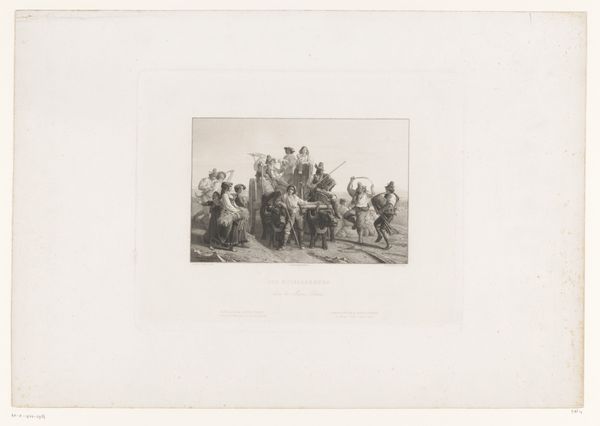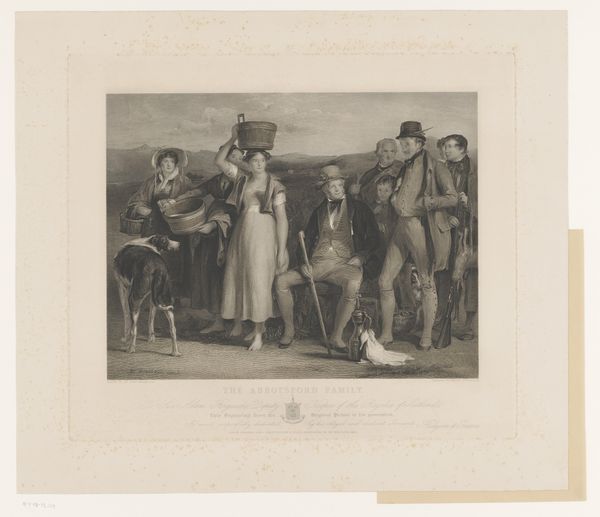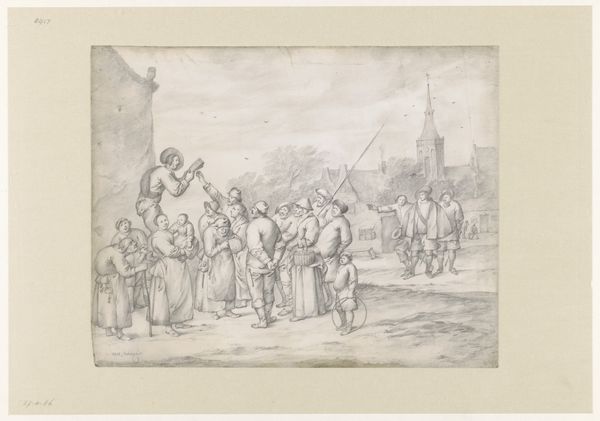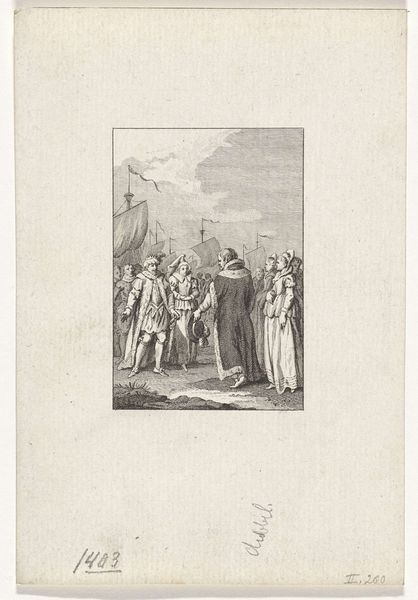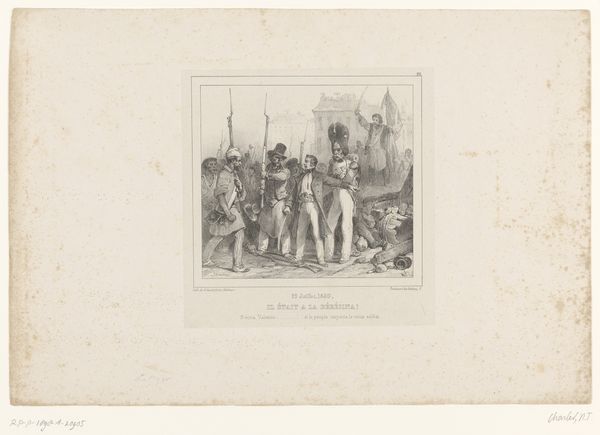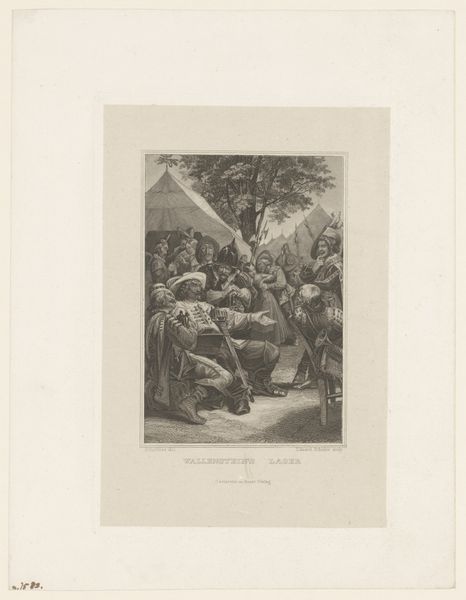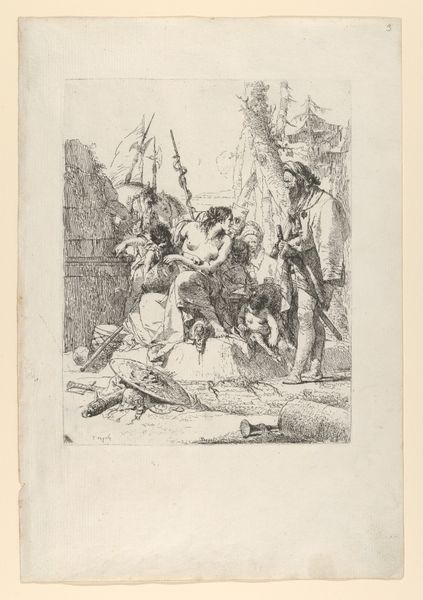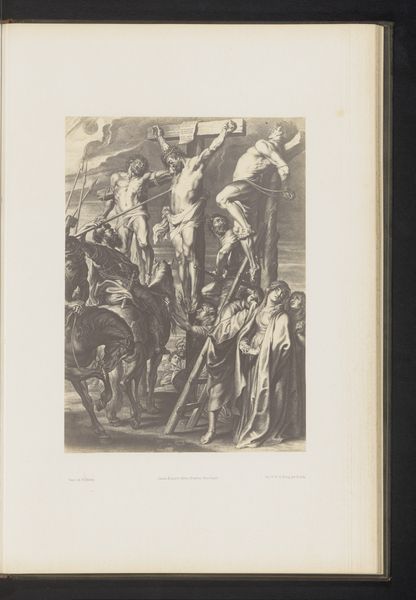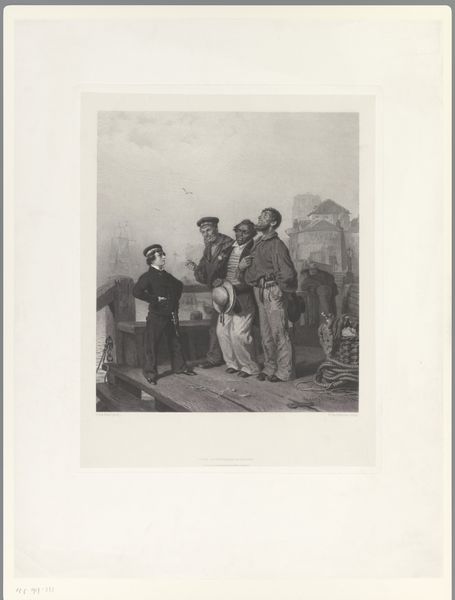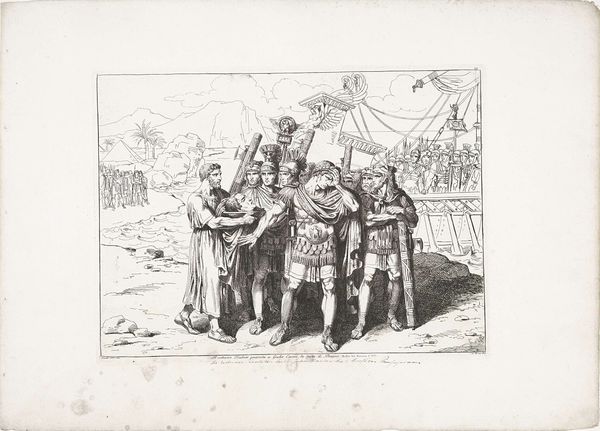
Dimensions: height 450 mm, width 315 mm
Copyright: Rijks Museum: Open Domain
Curator: Looking at this print, I’m immediately struck by its dramatic staging and somber tone. The massing of figures and delicate etching feel like an elegy. Editor: Indeed. The work before us, created by Johan Philip Koelman in 1885, depicts *Lodewijk van Nassau tijdens de slag bij Heiligerlee*, or Louis of Nassau during the Battle of Heiligerlee. It’s an etching, an engraving printed on paper. Curator: The medium itself seems significant. An etching suggests a focus on line and tonal gradation, doesn’t it? Note the density of hatching used to create shadow, especially around the edges of the figures, setting them in this very subtle hazy or smoky battle atmosphere. Editor: Yes, and we must consider how such images functioned. Printed reproductions like these democratized access to historical narratives and cultivated a sense of national identity, particularly within a Dutch context still reckoning with its past and forging its future. Koelman’s Romantic style heightens this sense of nationalistic pride, focusing on the brave leaders of that period. Curator: Note also the rather traditional pyramidical composition and relatively flat picture plane. Despite the apparent dynamism of the soldiers waving swords, the forms remain static and legible, organized for clarity rather than illusionism. And the tonal consistency reinforces the image’s conceptual unity. Editor: Absolutely. The visual organization reinforces the socio-political aim to represent this historical event, underscoring the importance of Dutch leaders from the late 16th Century like Louis, reinforcing their role in Dutch identity, while simultaneously recalling the political struggle of its era. These aren't objective documents, but constructed representations carrying considerable weight. Curator: Looking at it this way, I think what impresses me most is Koelman's effective manipulation of tone to underscore a scene so central to national identity. Editor: Agreed. This single image embodies both aesthetic principles and their historical reception—a fascinating testament to the enduring power of representation in society.
Comments
No comments
Be the first to comment and join the conversation on the ultimate creative platform.
